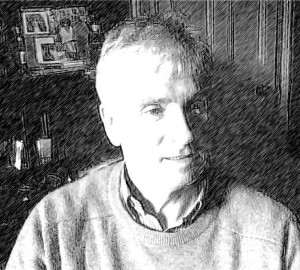It’s the conference season and I seem to have ended up talking a lot with doctors about multimorbidity and polypharmacy. There’s pretty much universal agreement that there is too much medicine. I hear tales of wholesale crossing out of drugs from lists of medicines and how much better everyone is………and I do an “Oh really?” moment. I’m sure there are lots of medicines that can be stopped and should be stopped, but it’s just a bit more complicated than it is sometimes being painted.
We seem to still be in the era of approaches which I’d equate to Newtonian physics—the “to every action there is an equal and opposite reaction” stuff. It’s obviously appropriate to be sorting out contraindications and interactions, to be reducing or increasing dosages, and to ensure that in medication reviews people know how to use their medicines. But this only gets us so far.
Physics has moved on from Newton and become fiendishly complicated. So too have consultations, for now we’re juggling three elements:
The first is the evidence, limited though it is by the fact that even the best evidence is based on what works in single diseases, extrapolated from trials which usually exclude people with co-morbidities, and from populations with a mean age much younger than most patients who need such a consultation. Even if the number needed to treat and the number needed to harm are available, they are average estimations from data that may be a fair bit different from the patient in front of us, and in addition, we can’t predict what will happen to this patient.
The second is the needs and wishes, the values and preferences of patients. The Royal College of General Practitioners does a great job in teaching and assessing this up to the point of certification. But this training, one of the main skills required of all practitioners in healthcare, is less prominent elsewhere and especially in postgraduate training curricula and in continuing educational activities—even for GPs. A senior nurse outside the UK told me recently how concerned she was about nurses who, at the end of their training, had great people skills but after graduation were rapidly harried by the volume and pace of work into being less people-centered—particular issues being the paperwork and IT burden. Amen to that.
The third property is our own clinical expertise. Humans are great pattern-recognisers. Its in our DNA—there’s an evolutionary advantage tens of millions of years ago in being able to recognise a fruit we can eat from one which will make us sick, a friend from an enemy, and so on. So we can’t turn off the pattern recognition function of our brain and largely that’s a good thing. One of the characteristics of how experts make decisions is that they have a large memory bank of previous cases that may be similar to the one under consideration. Such cases pop up spontaneously from memory and even though there may well be differences from the current case, their availability contributes to the generally better decision making of experts compared to novices.
For how to do multi-morbidity better, we need to study how expert clinicians on a good day juggle these three principles brilliantly and largely unconsciously. Blending all three essential properties in a consultation is an amazingly complex task. In quantum mechanics there is the Heisenberg Uncertainly principle which states that the more precisely the position of a subatomic particle is estimated the less precisely we can measure its momentum. I look forward to someone confirming my uncertainty principle for consultations—when making decisions with or for patients the more precisely we try to define the evidence, the more difficult it is for us to include patients’ values and preferences or truly utilise our expertise.
Once we get beyond the avoidance of obviously inappropriate drugs and doses, such decisions require very careful consideration involving exquisite consultation skills. Discussions about options and uncertainly with patients, their family and carers—often in situations involving age and frailty—are neither quick nor easy. But without at least a serious conversation about the evidence for benefit and harm and especially the goals of care with the patient and probably others, stopping a medicine can be bad medicine.
In the NICE guideline on multi-morbidity, when it emerges, I hope complexity and consultation skills are represented, and the need to understand better how experts do it well. And the truth that in such consultations there are responsibilities on both parties to share explicitly their values, preferences, and expertise.
Neal Maskrey spent 20 years as a GP, the last third combined with developing primary care for a health authority. After 14 years as a director of the National Prescribing Centre and programme director of the Medicines and Prescribing Centre at NICE, he is now honorary professor of evidence informed decision making at Keele University, and co-leads a European evidence based, academic detailing programme at the University of Amsterdam.
